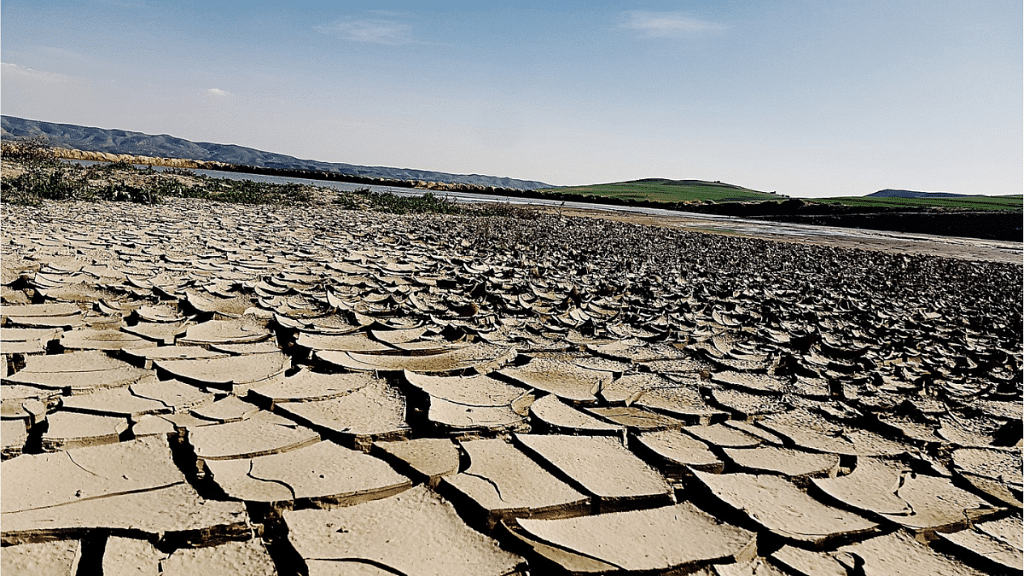Water is vital to global trade with 90% of products moving around the world via oceans and waterways.
But summer 2022 illustrated just how sensitive some key waterways are to droughts – the Mississippi, Yangtze and Rhine rivers all experienced serious bottlenecks.
Although much of the disruption caused by the droughts has passed for now, the prognosis for the future is for more extreme droughts, and not just in arid areas. By 2050, drought could affect 75% of the global population, the United Nations (UN) says.
This has potentially alarming consequences for global trade – when water levels are too low to facilitate the movement of vessels, the supply chain breaks down. And that can be expensive. Economic damage from droughts jumped by 63% in 2021 compared with the 20-year average, according to the World Meteorological Organization.
These images show how three key rivers were affected by drought and what can be done to prepare for the future.
Europe’s worst drought in 500 years
The Rhine River starts in Switzerland and runs for nearly 800 miles to the Netherlands where it joins the North Sea. It is a crucial transport link for Europe, moving over 300 million tonnes of goods a year.
Summer 2022 brought low water levels to the Rhine that caused severe delays to shipping arrivals and departures. Some vessels were forced to sail with cargoes at just 25% of capacity as Europe endured its worst drought in 500 years.
America’s 22-year mega-drought
The southwest US is in the midst of a 22-year drought – its driest period for 1,200 years. And even less arid parts of the US to the east are feeling the effects of drought more often.
The Mississippi River runs from Lake Itasca in northern Minnesota for nearly 2,350 miles to the Gulf of Mexico, transporting over 450 million tonnes of imports, exports and domestic freight every year.
But some routes were closed off in October because of low water levels, until dredging operations deepened shipping channels to allow a backlog of over 2,000 barges to reach destinations.
The cost of this was $20 billion in supply chain impact and economic damage, according to AccuWeather.
China’s lowest water levels since 1865
The Yangtze River Basin stretches from coastal Shanghai to Sichuan province in China’s southwest and includes Asia’s longest river. It dwarfs shipments on the Rhine and the Mississippi, with annual cargoes of over 3 billion tonnes.
But low rainfall in the river basin and high temperatures sped up evaporation, leaving August water levels in the drainage area of Yangtze River at 60% below average levels for the month.
China experienced a summer drought so severe that water levels on the Yangtze reached their lowest level since 1865, causing hydropower shortages and halting shipping.
The future of drought disruption?
Droughts are becoming more frequent and lasting longer as climate change increases global temperatures and makes water availability more unpredictable. Droughts are up by nearly 30% since 2000 – in both number and duration – compared with the previous 20-year period, The UN says in its 2022 Drought in Numbers report.
The short-term solutions for bottlenecks on waterways transporting commodities are limited. The German Government is looking at deepening a shallower section of the Rhine, a similar initiative to the dredging done by the US Army Corps of Engineers on the Mississippi. Adding water from elsewhere is also an option – China’s Ministry of Water Resources discharged over five billion m3 of water from reservoirs into the river during the harshest periods of summer.
Longer term, Germany’s Institute of Development and Sustainability’s report on drought suggests “investing in better early warning systems for low water levels, (and) shifting away from reactive and crisis-based approach towards a more proactive and risk-based drought management approach”.
Ultimately though, more intense droughts are an inevitable consequence of climate change, and reducing the severity of droughts will only be achieved by restoring ecosystems and limiting temperature increases.
“Recent scientific studies on drought point to a precarious future for the world and all nation-states, far beyond just those in arid regions. This wake-up call is louder and clearer than ever before,” warns the UN Drought in Numbers report.
